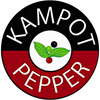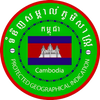What do New Year's in Cambodia and our Easter have in common?
The Cambodian New Year, also known as the Khmer New Year (in Khmer: បុណ្យចូលឆ្នាំខ្មែរ), also called Choul Chnam Thmey or Moha Sangkran, is a traditional annual celebration of the new year in Cambodia. This three-day festival falls this year on April 14th - 16th and is associated not only with the start of the solar year according to, for example, India or Thailand, but also, in terms of timing, for example, with our Easter. And the date is actually not the only thing these two holidays have in common.

Pagan blessing or Khmer tradition?
Besides the very traditional cleaning of Buddha statues with perfumed water by the elders, the rich setting of tables with flowers and food to honor their ancestors, and the display of beautiful festive costumes, the Khmers celebrate the arrival of the new year also with the very popular water pouring. Does this remind you of the Moravian countryside? It certainly can, because this custom looks very similar and definitely the youth have a lot of fun with it both here and in Cambodia!
Prepare for a proper shower
While here the so-called "Oblévačka" means pouring water on girls on Easter Monday – originally as a punishment for stinginess and not giving gifts to carolers, later known as a rejuvenating treatment – it always took place with buckets and cold water, in Cambodia they most often pour liquid plaster (a mixture of water with some chalk powder). This festival is called Srang Preah. In both cases, you can be almost 100% sure that this shower will unexpectedly land on your head thanks to the younger generation, who properly enjoy both holidays.
But don't be confused and definitely don't take it as malice; pouring water for Khmers means an apology – they apologize to their elders for any mistake they caused and to show gratitude.
April – holiday time
The reason why Cambodians celebrate the new year beginning in April basically has two reasons. First, in the Angkor era, that is in the 13th century, the then Khmer king changed the new year to the fifth month of the lunar calendar, that is April according to the solar calendar. And because about 95% of the population in Cambodia is engaged in agriculture, this made great sense to everyone. The period from November to March is the busiest time for Khmer farmers when they harvest rice fields. In April, Khmers find time for a little vacation after hard work in the fields, because it still does not rain and it is still very hot.
And what about Kampot pepper, you ask? It slightly deviates from this harvest ending because it needs different conditions than rice. And we already know well that the rarest ripe red pepper is harvested only at the turn of May.
Share






